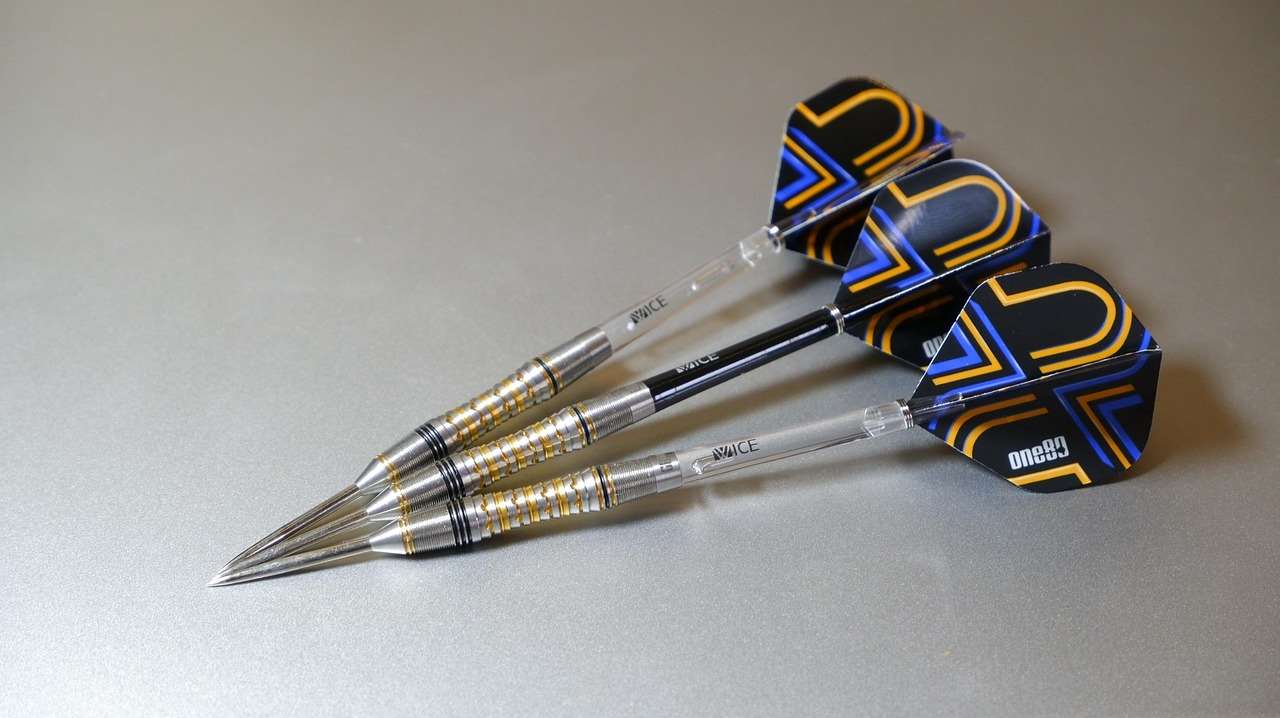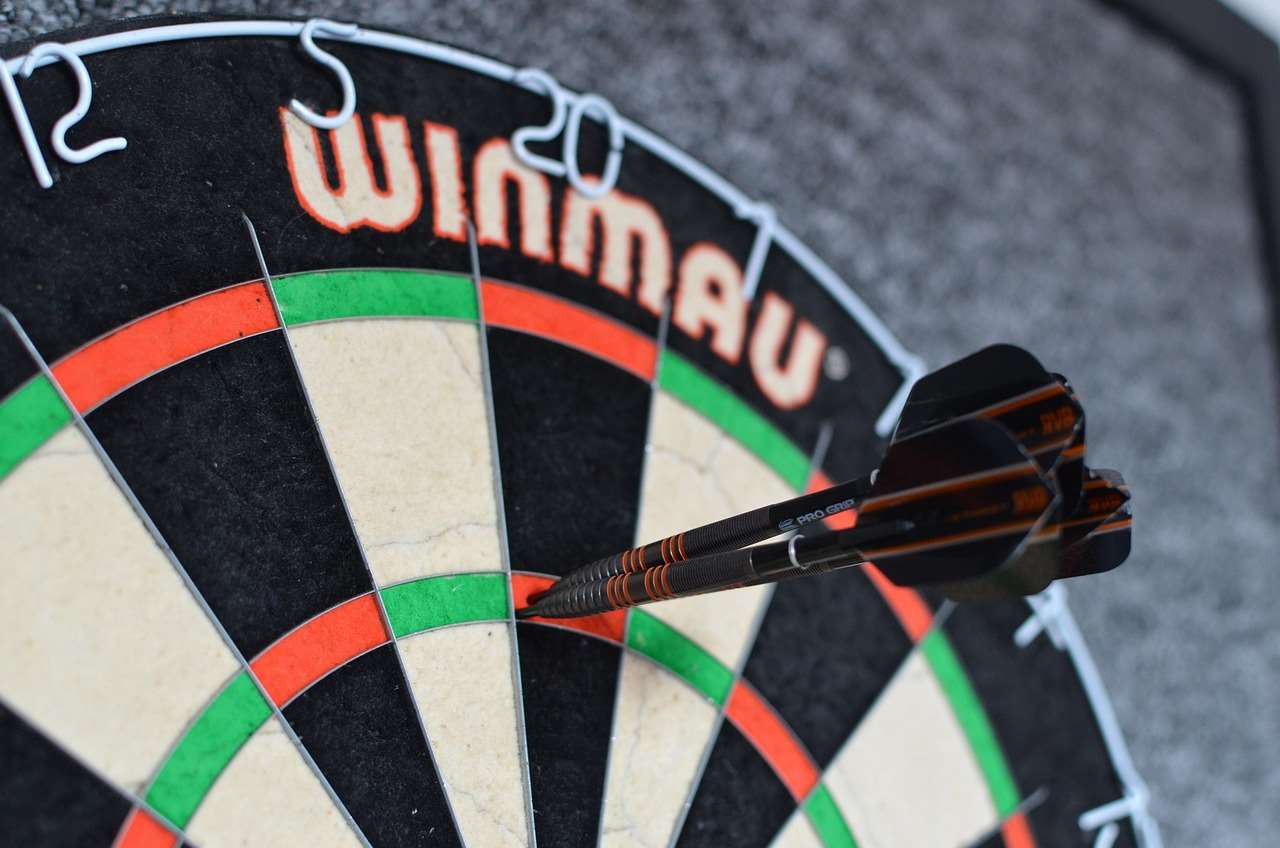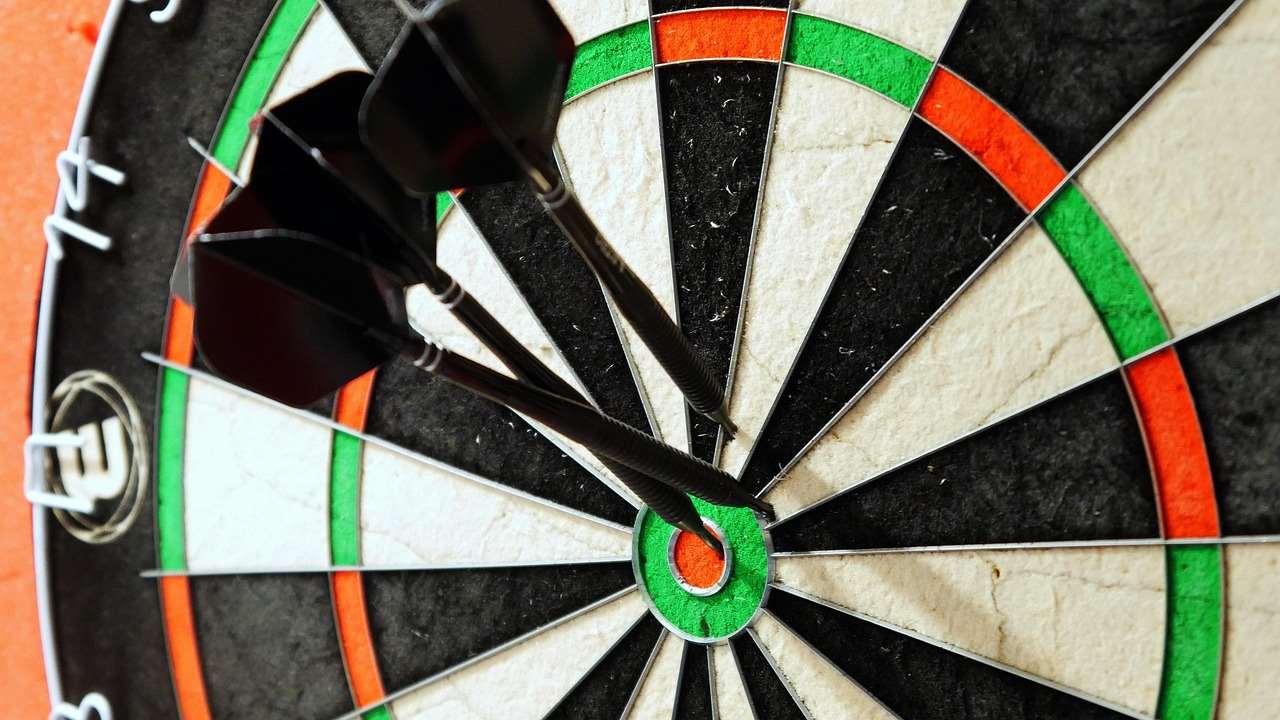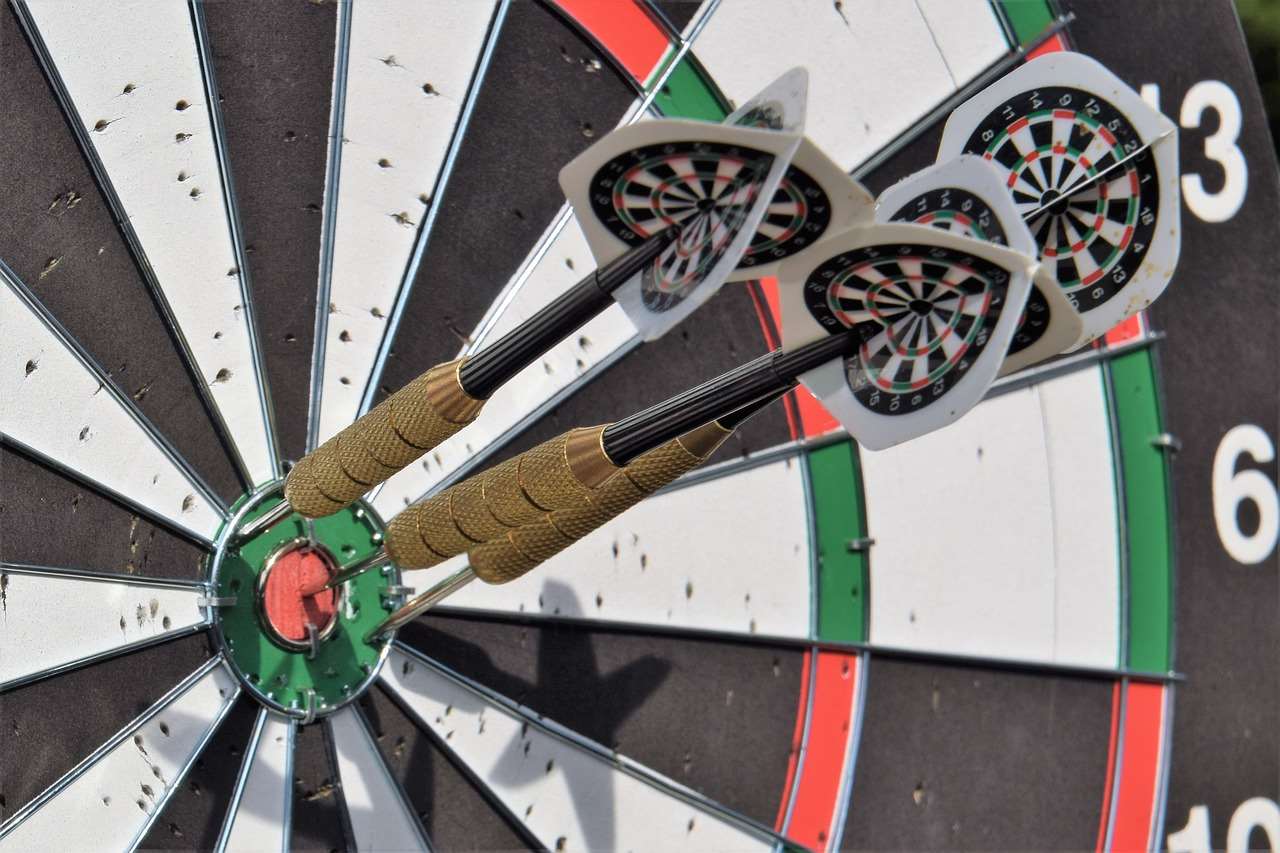Improving dart throw shape is crucial for achieving consistent accuracy and upping your game, and it all boils down to developing a repeatable throwing motion; this article will guide you through stance, grip, arm movement, uitgave, and follow-through to cultivate a smooth and effective throw.
⚠️ Still Using Pen & Paper (Of een schoolbord)?! ⚠️
Stap in de toekomst! De Dart Teller -app behandelt alle scoren, stelt kassa voor, en volgt uw statistieken automatisch. It's easier than you think!
Probeer de Smart Dart Teller -app gratis!Klaar voor een upgrade? Klik hierboven!
Stance: The Foundation of Your Throw
Your stance is the bedrock upon which your entire throw is built. A stable and balanced stance allows for consistent weight distribution and minimizes unnecessary movement. There are three primary stance options:
- Front-Facing Stance: This involves standing squarely facing the dartboard. While seemingly straightforward, it can sometimes lead to swaying.
- Side-On Stance: Positioning yourself perpendicular to the board offers greater stability and reduces lateral movement. It’s a popular choice among professional players.
- Open Stance: A variation where your front foot is slightly angled towards the board. This can provide a comfortable middle ground between front-facing and side-on stances.
Experiment with each to find what feels most natural and balanced for you. Consider where your weight naturally rests, and how each stance affects your body’s ability to remain still during the throwing motion. The key is to **maintain stability** throughout the entire throw, from setup to follow-through.

Grip: Finding Your Perfect Hold
The way you grip the dart is a deeply personal preference. There’s no single “correct” grip, but understanding the principles can help you discover what works best for you. Think about factors like pressure and contact points. Some players prefer a light grip, while others like a firmer hold. As we discuss grip, remember you can Kies de beste Dart -apparatuur to match your throwing preferences and style.
Key Grip Considerations:
- Number of Fingers: Most players use three or four fingers to grip the dart. Experiment with different combinations to see what feels most secure and controlled.
- Pressure: Avoid gripping the dart too tightly, as this can cause tension and affect your release. A relaxed grip allows for a smoother, more natural throw.
- Placement: The placement of your fingers on the dart can influence its trajectory. Some players grip closer to the point, while others prefer a more central grip.
- Consistency: Once you find a grip that feels comfortable and controlled, stick with it. Consistency is key to developing a repeatable throw.
Don’t be afraid to try different grips until you find one that feels natural and gives you good control over the dart. Minor adjustments to your grip can have a significant impact on your accuracy.
Arm Movement: The Engine of Your Throw
The arm movement is where the power and precision of your throw are generated. The goal is to create a smooth, repeatable motion that minimizes unnecessary movement and maximizes accuracy. The most common approach involves a pendulum-like motion, using the elbow as the primary hinge.
Developing a Smooth Arm Motion:
- Elbow Position: Keep your elbow relatively stable throughout the throw. Avoid letting it drift up, down, or to the side.
- Backswing: Bring the dart back in a controlled arc, keeping your wrist firm. The backswing should be consistent in length and speed.
- Forward Swing: Bring the dart forward smoothly and deliberately, focusing on a straight line towards the target.
- Follow-Through: Extend your arm fully towards the target after releasing the dart. This ensures that you’re fully committing to the throw and helps maintain accuracy.
Avoid jerking or snapping your arm, as this can disrupt your throw and reduce accuracy. Practice in front of a mirror to monitor your arm movement and identify any inconsistencies.

Release: The Moment of Truth
The release is arguably the most critical part of the dart throw. A clean and consistent release can make all the difference in your accuracy. The ideal release involves letting go of the dart smoothly and naturally, without any flicking or jerking motions.
Key Release Considerations:
- Timing: Release the dart at the precise moment when your arm is fully extended towards the target.
- Fingertip Control: Use your fingertips to guide the dart as it leaves your hand. Avoid gripping the dart too tightly during the release.
- Smoothness: Strive for a smooth and effortless release. Avoid any sudden movements or hesitations.
Practice your release by focusing on these three elements. A good practice drill is to stand close to the board and focus solely on the release. Repeat this many times until you develop a feel for the perfect release point.
Follow-Through: Completing the Motion
The follow-through is an often-overlooked aspect of the dart throw, but it plays a crucial role in maintaining accuracy and consistency. A proper follow-through helps ensure that you’re fully committing to the throw and prevents any last-minute adjustments.
Elements of a Good Follow-Through:
- Full Extension: Extend your arm fully towards the target after releasing the dart.
- Point Direction: Your fingers should be pointing towards the target after the release.
- Hold the Position: Maintain the follow-through position for a brief moment after releasing the dart. This helps reinforce the correct throwing motion.
A good follow-through isn’t just about what you do with your arm; it’s also about maintaining your balance and stability throughout the entire throw. Make sure you’re not swaying or moving your body after releasing the dart. If you are considering materials, understanding why some people Why Choose Tungsten Darts can greatly improve your game, and allow for more consistent grouping with the right weight.

Practicing for Consistency and **Improving Dart Throw Shape**
Consistent practice is the cornerstone of improving dart throw shape and overall dart-throwing ability. It’s not enough to simply throw darts randomly; you need to practice with a purpose. Here are some tips for effective practice:
- Set Specific Goals: Before you start practicing, decide what you want to achieve. Are you trying to improve your accuracy, your consistency, or your overall score?
- Focus on Fundamentals: Don’t try to run before you can walk. Focus on mastering the fundamentals of stance, grip, arm movement, uitgave, and follow-through.
- Oefen regelmatig: Consistency is key. Aim to practice for at least 30 minutes several times a week.
- Record Your Progress: Keep track of your scores and identify areas where you need to improve.
Don’t get discouraged if you don’t see results immediately. Improving dart throw shape takes time and effort. Just keep practicing consistently and focusing on the fundamentals, and you will eventually see improvement. Remember that mastering your setup to Choose Right Dart Material will work to your advantage and give you better control of your game, and knowing your materials will make consistent practice all the easier.
Common Mistakes to Avoid When **Improving Dart Throw Shape**
Even with the best intentions, players often fall into common traps that hinder their progress. Recognizing and correcting these mistakes is vital for improving dart throw shape. Here are some pitfalls to watch out for:
- Over-Gripping the Dart: A tense grip restricts your throw and reduces accuracy. Maintain a relaxed, controlled hold.
- Moving Your Head: Keep your head still throughout the throw to maintain a consistent sight line.
- Rushing the Throw: Take your time and focus on each step of the throwing motion. Don’t rush the process.
- Inconsistent Stance: Ensure your stance is stable and repeatable for every throw.
- Ignoring Follow-Through: Completing the throwing motion is crucial for accuracy and consistency.
Be mindful of these mistakes and actively work to eliminate them from your game. Regularly videotaping your throws can also help you identify areas where you can improve. If you’re serious about upping your game, consider different dart compositions like those discussed in Beginner Dart Barrel Materials.

Mental Game and Focus
Dart throwing isn’t just about physical technique; it’s also about mental fortitude. Maintaining focus and a positive attitude can significantly impact your performance. Stress and frustration can easily creep into your game, leading to inconsistent throws and poor decision-making. Developing mental strategies to cope with pressure is essential for long-term success.
Strategies for Mental Toughness:
- Visualisatie: Before each throw, visualize the dart hitting the target. This can help boost your confidence and improve your focus.
- Deep Breathing: If you’re feeling stressed or anxious, take a few deep breaths to calm your nerves.
- Positieve zelfpraat: Vervang negatieve gedachten door positieve bevestigingen. Believe in your ability to throw well.
- Focus on the Process: Instead of dwelling on the outcome, focus on executing each step of the throwing motion correctly.
By cultivating a strong mental game, you can overcome challenges and perform your best under pressure. Herinneren, every dart throw is a new opportunity to excel.
Fine-Tuning Your Equipment
While technique is paramount, having the right equipment can provide an edge. Experimenting with different dart weights, shafts, and flights can help you find a setup that complements your throwing style. A common choice is Tungsten Darts Pros Cons, but other choices exist. Don’t be afraid to try different combinations until you find what feels most comfortable and effective.
Equipment Considerations:
- Dart Weight: Experiment with different dart weights to find what gives you the best control and feel.
- Shaft Length: Shorter shafts can improve stability, while longer shafts can increase accuracy.
- Flight Shape: Different flight shapes affect the dart’s trajectory and stability in the air.
- Grip Type: There are a variety of grip types available on darts, each offering a different level of texture and control.
Herinneren, the best equipment is the equipment that works best for you. Take the time to experiment and find what suits your individual preferences and throwing style.

Conclusie
Improving dart throw shape is a journey that requires dedication, practice, and a willingness to experiment. By focusing on the fundamentals of stance, grip, arm movement, uitgave, and follow-through, you can develop a consistent and accurate throwing motion. Remember to practice regularly, avoid common mistakes, cultivate a strong mental game, and fine-tune your equipment to suit your individual preferences. Take what you’ve learned and implement it in your next game, and watch your skills improve.
Hoi, Ik ben Dieter, En ik heb Dartcounter gemaakt (Dartcounterapp.com). Mijn motivatie was geen darts -expert - helemaal tegenovergestelde! Toen ik voor het eerst begon te spelen, Ik hield van het spel, maar vond het moeilijk en afleidend om nauwkeurige scores te houden en statistieken te volgen.
Ik dacht dat ik niet de enige kon zijn die hiermee worstelde. Dus, Ik besloot om een oplossing te bouwen: een eenvoudig te gebruiken applicatie die iedereen, Ongeacht hun ervaringsniveau, zou kunnen gebruiken om moeiteloos te scoren.
Mijn doel voor Dartcounter was eenvoudig: Laat de app de nummers afhandelen - het scoren, de gemiddelden, de statistieken, Zelfs checkout suggesties - zodat spelers puur kunnen richten op hun worp en genieten van het spel. Het begon als een manier om het probleem van mijn eigen beginners op te lossen, En ik ben heel blij dat het is uitgegroeid tot een nuttig hulpmiddel voor de bredere darts -community.